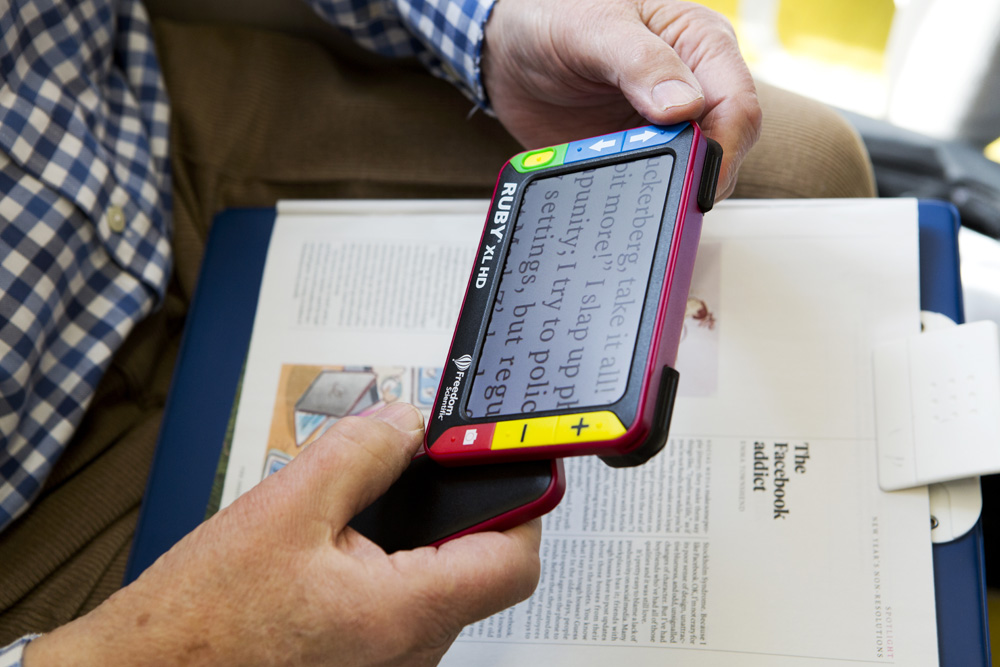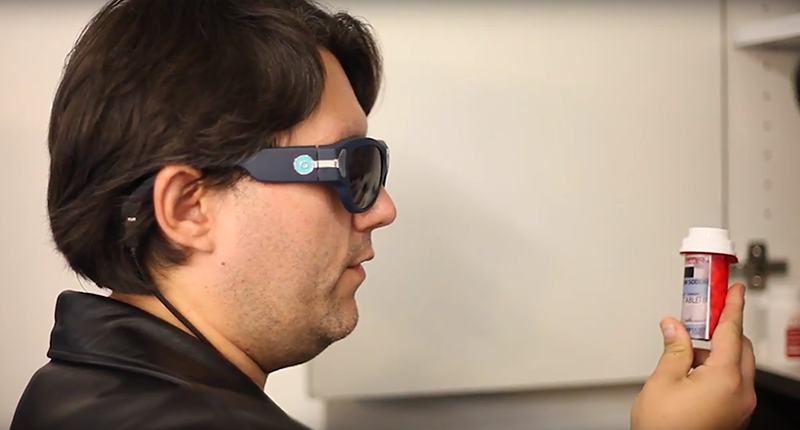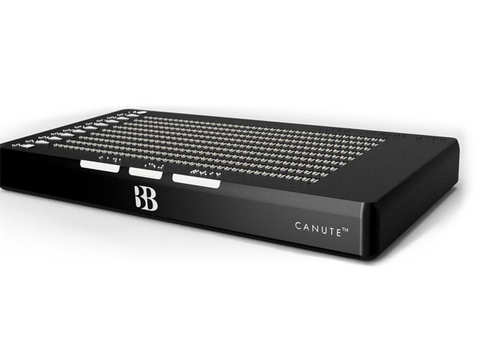Mobility Aids for Visually Impaired Users: Navigating the World with Confidence
Mobility Aids for Visually Impaired Users: Navigating the World with Confidence
Blog Article
Discover Cutting-edge Tools Developed for the Visually Impaired
The growth of innovative tools for the aesthetically impaired represents a considerable advancement in availability and freedom. Technologies such as wise glasses with AI abilities and mobile applications developed to provide acoustic summaries are improving everyday experiences for individuals.
Smart Glasses for Navigation

Smart glasses designed for navigation are revolutionizing the means visually impaired people interact with their atmosphere. These advanced gadgets utilize a mix of camera technology, man-made knowledge, and auditory feedback to offer real-time information about surroundings. By using challenge discovery systems, clever glasses can inform customers to possible dangers, making it possible for safer wheelchair in both strange and familiar settings.
The combination of GPS technology additionally improves navigation capabilities, allowing individuals to obtain auditory instructions as they relocate. This hands-free strategy not just cultivates independence however likewise equips visually damaged individuals to navigate city landscapes with increased confidence. In addition, many smart glasses are furnished with functions that identify sites and street indications, giving contextual information that improves the user experience.
Additionally, the growth of these devices is constantly advancing, with business functioning to boost the precision of things recognition and expand the series of navigational functions. As clever glasses come to be more available and affordable, they hold the possible to dramatically change life for visually damaged individuals. Eventually, these ingenious tools stand for a critical action towards inclusivity, offering improved wheelchair and a higher sense of autonomy for people navigating the world around them.

Mobile Application for Daily Living
How can mobile applications improve the day-to-days live of visually impaired people? Mobile applications are changing the way visually impaired individuals browse their settings, take care of daily tasks, and access info. These applications provide important assistance via numerous functionalities, fostering independence and enhancing high quality of life.
Numerous cutting-edge mobile applications are made specifically for daily living. For instance, applications like Be My Eyes connect aesthetically damaged customers with sighted volunteers using video clip calls, permitting them to obtain real-time assistance with jobs such as reading labels or navigating unfamiliar rooms. Likewise, Seeing AI, created by Microsoft, makes use of expert system to explain surroundings, read message, and recognize things, successfully changing a smart device into an effective tool for day-to-day assistance.
Additionally, navigation apps tailored for the aesthetically damaged, such as Aira and BlindSquare, provide audio-based instructions and environmental information, enabling users to traverse their surroundings safely and confidently. Beyond navigating and instant aid, mobile apps likewise support organization and task management, with functions that aid users establish tips, produce order of business, and track visits. In recap, mobile applications act as vital resources, equipping visually damaged individuals to lead more independent and satisfying lives.
Wearable Technologies for Support
Empowerment through innovation is progressively apparent in the world of wearable gadgets developed to assist aesthetically damaged individuals. These ingenious tools integrate flawlessly right into day-to-day life, boosting navigation and providing important feedback to individuals. Wise glasses outfitted look here with cameras can recognize faces and read message aloud, permitting individuals to interact more with confidence in expert and social setups.
One more remarkable innovation is the use of haptic comments systems in wearable tools. These systems use resonances or various other tactile signals to share information concerning the user's setting, such as barriers or adjustments in terrain, boosting movement and security. Wearable technologies additionally include wristbands that attach to smartphones, notifying individuals to alerts through refined vibrations, therefore improving connectivity without reliance on visual cues.
As these innovations remain to evolve, they are not just enhancing independence for visually impaired people however likewise fostering a better sense of addition in culture. By bridging the void between difficulties dealt with in day-to-day living and the potential for autonomy, wearable modern technologies work as essential devices in the mission for equality and empowerment for those with visual impairments.
Audio Description Devices
Audio description devices play a crucial duty in improving ease of access for aesthetically impaired individuals, offering them with the capability to involve with visual media. Speech-to-text devices for low vision. These devices provide narrated descriptions of crucial visual elements in films, television programs, and live efficiencies, making certain that customers can totally comprehend the context and emotions shared via visuals
Audio description can be incorporated right into different platforms, consisting of rimless sunglasses women streaming services, movie theater screenings, and live theater. Many popular streaming services currently consist of audio description as an ease of access attribute, enabling viewers to pick it easily. Along with traditional media, specialized applications also exist, supplying audio summaries for art exhibitions, museums, and various other social occasions.
The effectiveness of audio description depends upon the ability of the storytellers, who should share aesthetic details succinctly without detracting from the initial sound. Innovations in this field are additionally paving the means for more individualized experiences, where individuals can change the level of detail and pacing according to their choices.
Braille Innovations and Gadgets
Braille innovations and devices have significantly transformed the means visually impaired individuals connect with message and information. Modern improvements have actually led to the advancement of flexible devices that boost literacy and independence among users.
Additionally, mobile Braille notetakers incorporate standard Braille input with modern capabilities, helping with note-taking, scheduling, and record editing and enhancing on the move. Voice-activated assistive devices. These compact tools commonly feature text-to-speech capabilities, linking the space between Braille and acoustic details
In enhancement, cutting-edge Braille printers have arised, enabling customers to generate Braille labels, files, and my review here educational products effectively. This ease of access fosters better involvement in expert and educational settings, eventually promoting inclusivity.
Furthermore, study into clever Braille innovations continues to increase. Gadgets that include expert system are being discovered to provide real-time navigating support and contextual information, boosting the customer experience in varied settings. Overall, these technologies reflect a dedication to equipping aesthetically impaired people via innovation, guaranteeing they can easily accessibility and engage with the globe around them.

Verdict
The development of innovative devices for the aesthetically impaired considerably enhances freedom and lifestyle. Smart glasses, mobile applications, wearable innovations, audio summary devices, and Braille developments collectively encourage individuals by offering essential navigating help, ecological understanding, and improved analysis experiences. These technologies not only foster greater addition but additionally promote freedom in everyday activities, inevitably contributing to a more equitable and obtainable society for aesthetically impaired people. Continued advancement in this field holds pledge for further improvements.
As wise glasses come to be more obtainable and budget friendly, they hold the prospective to dramatically transform day-to-day life for aesthetically impaired individuals. Mobile applications are reinventing the means visually impaired customers navigate their environments, handle everyday jobs, and accessibility information. Applications like Be My Eyes attach aesthetically damaged individuals with sighted volunteers by means of video clip telephone calls, allowing them to get real-time aid with jobs such as reviewing labels or navigating unfamiliar areas.Furthermore, navigation apps tailored for the aesthetically impaired, such as Aira and BlindSquare, provide audio-based directions and ecological details, making it possible for customers to traverse their environments securely and with confidence.The advancement of innovative devices for the aesthetically damaged dramatically boosts freedom and top quality of life.
Report this page